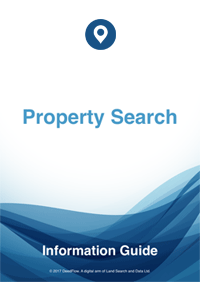Rights of Way Search
Contents
Article Summary
The purpose of a Rights of Way search is to provide all the available documentation so that a property owner can elicit the precise terms affecting either a private or public right of way that he either has the benefit of or the burden of. The search comprises the Title Registers, Title Plans and Associated Documents for each property (and Lease if one of the properties is leasehold) for information relating to private rights of way, and the available public documents in respect of public rights of way. This article examines the nature and scope of these documents, how to obtain the search, and details of other articles that provide further in depth information.
Rights of Way Search
The documents comprising a Rights of Way search are:
- Title Register for each property
- Title Plan for each property
- Associated Documents and Deed Plans for each property
- Lease and Lease Plan (if one of the properties is leasehold)
- Illustrated Rights of Way booklet with samples of private and public rights of way
- Neighbourhood Report
- CROW Map
- Common Land Search (if option selected)
The cost of a Rights of Way search is £139.
Title Register
The Title Register provides details of rights of way in both its A section and its C section. Rights of Way are easements. Easements that you have the benefit of will appear in the A section of your Title Register, and the C section of your neighbour's Title Register. Your property will be known as the Dominant Tenement, because you have the right over your neighbour's land. Your neighbour's property will be known as the Servient Tenement, because it is his land that you have a right of way over.
Where the Right of Way burdens your property it will instead appear in the C section of your Register, and the A section of your neighbour's register. In this case, your property will be the servient tenement and your neighbour's the dominant tenement.
The Title Register will usually refer to the Conveyancing Deed that created the Right of Way and will generally contain a note that a copy of it has been retained by the Land Registry.
Title Plan
The Title Plan will illustrate the Right of Way, showing it either as a blue tinted feature or a brown tinted feature. The Land Registry colouring protocol is for a right of way (or other type of easement) for the benefit of the land (and therefore appearing in the A section of the Register) to be tinted brown; if the land has the burden (C section) it will be tinted light blue.
Associated Documents and Deed Plans
As stated above, the Land Registry will often retain a copy of the Deed creating a right of way. At the foot of the paragraph in the Register that refers to the Deed a note will appear to say that a copy has been made (if it has). Where such a note appears that Deed will be available to anyone wishing to obtain a copy of it. The Deed will usually contain a lot more information than that shown in the Register, and should always be looked at where there is a rights of way problem.
Many Associated Documents have plans attached to them (Deed Plans), and these often provide further useful information.
Lease and Lease Plan
Where one of the properties is leasehold there will always be a Lease. The Lease almost always has a Lease Plan attached to it. The Lease and Lease Plan between them may also offer a significant amount of further information pertaining to rights of way.
Illustrated Guide Book
This is a lengthy, full colour and fully illustrated book in PDF format. As well as describing the relevant factors pertaining to rights of way it also provides day to day sample extracts from the available documents that illustrate what you would be looking for in your documentation. There is a separate section providing full details of the types of public rights of way that may affect your property.
Neighbourhood Report
The Neighbourhood Report is usually about 40 pages long and deals with many aspects of your neighbourhood. In particular, there is an OS map extract centered on your property that provides details of rights of way within a radius of 250 metres. These include footpaths, bridleways, byways open to all traffic, roads used as a public path, national trails, recreational paths, permitted bridleways, permitted footpaths, and cycle routes.
CRoW Map
This is a map provided by the Countryside and Rights of Way Act 2000. It is centered on your property and provides details of access land where freedom to roam rights exist on, adjoining or near to your property.
Common Land Search
This search is only included with your documentation if you tick a box asking for it. The Common Land Search will state whether your or the adjoining land is affected by Commoner's Rights, and provide details of those rights.
Rights of Way Search
The Rights of Way Search provides Land Registry documents detailing all private rights of way that affect the property having the benefit of and the property having the burden of the right of way, and also provides Environmental documents that detail public rights of way.
£139.95Boundary Search
The Boundary Dispute Search provides copies of all available Land Registry documents for the properties on each side of the boundary, together with details of common law presumptions that will apply where there is no evidence to the contrary.
£99.95Parking Space Disputes
Parking Dispute searches provide details of all registered documents that contain references to parking spaces, drives, etc, whether on street or off street
£64.95


